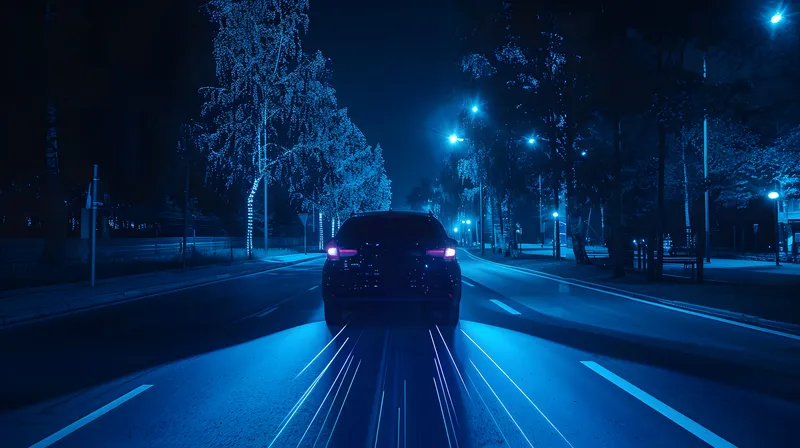Dr Peter Sweatman, Director of the University of Michigan Transportation Research Institute (UMTRI) and the new chairman of ITS America, has no doubt where safety stands in the ITS world What do you hope to achieve in your term as chairman of ITS America? I really want to advance the agenda of safe and sustainable transportation because ITS really is the only weapon that can advance that. We have been working on connected vehicles for safety for a number of years, putting all of the right elements in place,
May 21, 2012
Read time: 4 mins

Dr Peter Sweatman, Director of the 5647 University of Michigan Transportation Research Institute (UMTRI) and the new chairman of ITS America, has no doubt where safety stands in the ITS world
Q What do you hope to achieve in your term as chairman of ITS America?
A I really want to advance the agenda of safe and sustainable transportation because ITS really is the only weapon that can advance that. We have been working on connected vehicles for safety for a number of years, putting all of the right elements in place, so we need to move that forward with model deployment and eventually full deployment.
Part of sustainability too is the extensive highway system we have in the US and our ability to maintain and improve that and to roll out smarter systems throughout the highway system. Not only is it important for vehicles to be connected, and the automotive industry has made great strides to advance that, but I think also on the public sector side, we need to advance the intelligent systems throughout the highway network. That way we are going to make it sustainable economically for the future. So that’s a critical aspect.
Q You previously chaired the ITS America Safety Forum, so that’s an area you are obviously very interested in?
A At the end of the day, job #1 for ITS is safety. Period. It’s already successfully making an impact. We already have advanced systems in vehicles; on the road we have adaptive traffic signals, and you look at somewhere like Oakland City in Michigan which has the lowest crash rate in the country, largely the result of 600 adaptive traffic signals.
So safety is the first application and we are going to get all the other benefits as well, such as reductions in energy requirements and better traffic movement. Safety really is the first among equals when it comes to the applications for ITS.
Q What are you expecting from this year’s ITS America meeting?
A On the safety front first, we have a great session, with contributions from some of the leading figures in the country, on distracted driving and that is critically important for America at the moment. It’s a key issue because ITS equates to technology and that technology has to have an interface with the user. There is a lot more work to be done to make sure the interface works effectively and isn’t confusing or distracting. Not just in vehicles - we are going to see more and more intelligence in the highway system and we have to make sure that users aren’t going to be confused with that. So we have a lot of work to do in the human factors area to ensure the technology that is deployed on a much wider scale is going to be as useful and as effective as it possibly can be with a human operator.
Now eventually, we are gradually going to be taking the human out of the loop. But we have a long way to go before we get to that point. So that’s one important area for this annual meeting – the interface between the human and the user. For ITS that is a much more critical area to get involved with for users to experience the benefits and for us to understand how users see it and make it more attractive.
Q How do you see the industry in general developing?
A That’s reflected in another important area here at this event, which is the interesting business models that are evolving around transportation. And now we have4186 Xerox, a global service provision company, very much involved in transportation. With such large and very effective companies becoming more involved in transportation, that is going to change the business model.
Q In recent times, venture capital has been flooding into the ITS industry, will that change things too?
A I think we are on the threshold of transport becoming a service industry and therefore the business models have yet to be fully developed. So it is a wonderful opportunity for start up companies, particularly for transportation in large urban areas and so on, for new business models, and entrepreneurship. We are in exciting times.
What is happening in the transportation sector is a bit like what we are seeing in energy and also in water. Transportation – personal and public mobility, and of course freight and logistics - is probably the other critical element for cities of the future. And there are tremendous business opportunities there. It’s exciting to see some of the new companies coming in and needing and getting involved in ITS and transportation.
Q What do you hope to achieve in your term as chairman of ITS America?
A I really want to advance the agenda of safe and sustainable transportation because ITS really is the only weapon that can advance that. We have been working on connected vehicles for safety for a number of years, putting all of the right elements in place, so we need to move that forward with model deployment and eventually full deployment.
Part of sustainability too is the extensive highway system we have in the US and our ability to maintain and improve that and to roll out smarter systems throughout the highway system. Not only is it important for vehicles to be connected, and the automotive industry has made great strides to advance that, but I think also on the public sector side, we need to advance the intelligent systems throughout the highway network. That way we are going to make it sustainable economically for the future. So that’s a critical aspect.
Q You previously chaired the ITS America Safety Forum, so that’s an area you are obviously very interested in?
A At the end of the day, job #1 for ITS is safety. Period. It’s already successfully making an impact. We already have advanced systems in vehicles; on the road we have adaptive traffic signals, and you look at somewhere like Oakland City in Michigan which has the lowest crash rate in the country, largely the result of 600 adaptive traffic signals.
So safety is the first application and we are going to get all the other benefits as well, such as reductions in energy requirements and better traffic movement. Safety really is the first among equals when it comes to the applications for ITS.
Q What are you expecting from this year’s ITS America meeting?
A On the safety front first, we have a great session, with contributions from some of the leading figures in the country, on distracted driving and that is critically important for America at the moment. It’s a key issue because ITS equates to technology and that technology has to have an interface with the user. There is a lot more work to be done to make sure the interface works effectively and isn’t confusing or distracting. Not just in vehicles - we are going to see more and more intelligence in the highway system and we have to make sure that users aren’t going to be confused with that. So we have a lot of work to do in the human factors area to ensure the technology that is deployed on a much wider scale is going to be as useful and as effective as it possibly can be with a human operator.
Now eventually, we are gradually going to be taking the human out of the loop. But we have a long way to go before we get to that point. So that’s one important area for this annual meeting – the interface between the human and the user. For ITS that is a much more critical area to get involved with for users to experience the benefits and for us to understand how users see it and make it more attractive.
Q How do you see the industry in general developing?
A That’s reflected in another important area here at this event, which is the interesting business models that are evolving around transportation. And now we have
Q In recent times, venture capital has been flooding into the ITS industry, will that change things too?
A I think we are on the threshold of transport becoming a service industry and therefore the business models have yet to be fully developed. So it is a wonderful opportunity for start up companies, particularly for transportation in large urban areas and so on, for new business models, and entrepreneurship. We are in exciting times.
What is happening in the transportation sector is a bit like what we are seeing in energy and also in water. Transportation – personal and public mobility, and of course freight and logistics - is probably the other critical element for cities of the future. And there are tremendous business opportunities there. It’s exciting to see some of the new companies coming in and needing and getting involved in ITS and transportation.










